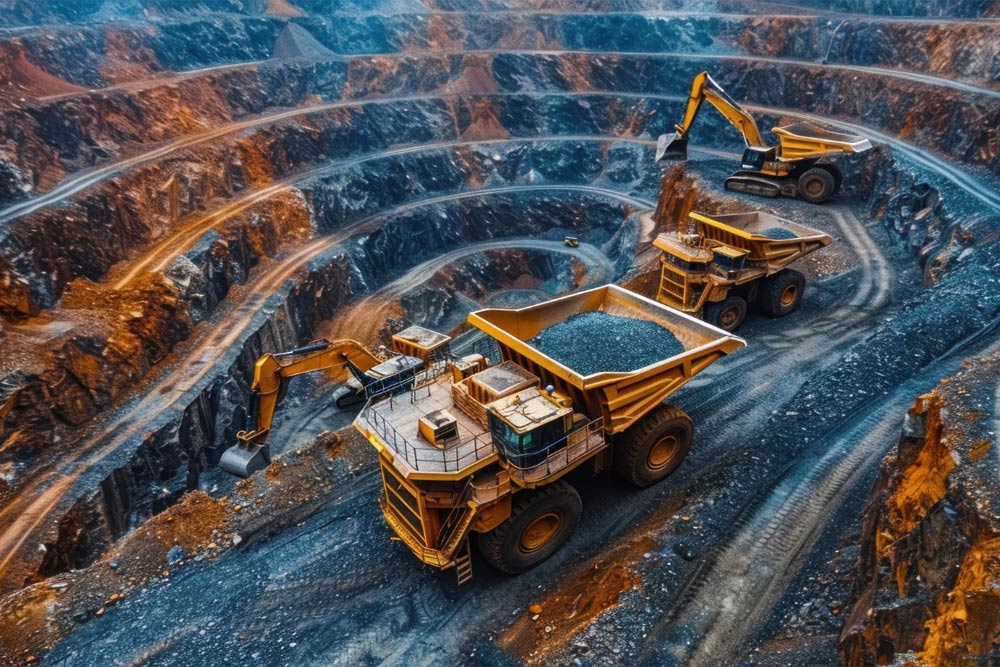The diamond industry is in the spotlight nowadays basically because of the environmental and ethical impacts. With increasing awareness about sustainability, consumers are more aware of how their purchase will influence the earth and the human being’s making it. It is on this count that lab-grown diamonds, including beautiful diamonds for rings and others at various diamond prices, have stirred conversation as to whether or not the diamond mining practice is sustainable compared.
Diamond Mining Industry: General Overview
Traditional diamond mining primarily in African, Russian, and Canadian mines has been associated with environmental devastation. Most earth removal in locations upsets ecosystems and wildlife. Other than environmental devastation, there are other human rights aspects involved, including exploitation of labor and funding of conflicts. This has led to the higher accountability the diamond supply chain is currently being made to take on.
But it is facing such issues and now the industry is much more sustainable. The example includes the certifications of ethical mining, for example, the Kimberley Process. It has focused on the reduction of trade in conflict diamonds. However, these measures prove to be controversial.However, consumers have shifted towards choices such as lab-grown diamonds for a responsible and sustainable decision.
Lab-Grown Diamonds: The Responsible Alternative
The most famous alternative for mined diamonds is lab-grown. Being a manufactured product, it is engineered through the finest technology in a controlled environment. Companies like RareCarat can sell a series of diamonds suitable for rings, which do not destroy any environment, like the environment in a conventional mine. Because chemically, it’s indistinguishable from mined, the lab-grown diamond will consume much lesser quantities of energy and water for its production. Moreover, they are taking away human rights issues in mining which offer a far more ethical means of consumption to a consumer.
Lab-grown diamonds happen to be one of the biggest trends for engagement rings today due to affordability, all without compromise for beauty and sustainability. The price of a diamond for a lab-grown is drastically lower as compared to the mined diamonds. This is, therefore, a very attractive choice to many clients. For example, RareCarat has some mind-blowing ones, including a 4.5-carat round-cut lab diamond or a 5-carat cushion-cut diamond which would be a great investment for an individual who wants to invest in something beautiful at the same time making his contribution to the environment.
Environmental Damage of Conventional Diamond Mining
Diamond extraction permanently destroys the environment. The process of extracting diamonds entails the massive excavation into earth that is characterized with deforestation, soil erosion, and natural habitats destruction. The use of poisonous chemicals such as mercury and cyanide applied in the extraction of diamonds pollute the local water sources and the soil, a permanent damage to the environment.
In addition to environmental degradation, natural diamond mining emits a lot of carbon. Energy requirements in diamond mining are extensive. For example, transportation and processing of diamonds result in a high carbon footprint. However, lab-grown diamonds have much smaller carbon footprints, making them more environment-friendly to consumers that care about their environment.
Role of Technology in Sustainable Diamond Production
Technology advancement has also played a huge role in making diamond production more sustainable. Techniques such as CVD and HPHT have changed the way diamonds are grown in the lab, where it has now become possible to produce high-quality diamonds at a fraction of the environmental cost by comparison with mining. Since the technology continues to advance and lab-grown diamonds become more cost-efficient, they are expected to become even more affordable for the consumer.
It is companies like RareCarat, manufacturers of lab-grown diamonds for rings, ethically produced, bright, and amazing in beauty that are fighting for this revolution to take hold in the world.
The laboratory grown diamonds, even though on-par with the earth-mined quality, match mined diamonds but produce the same quality of brilliance and clarity from these diamonds in far more sustainable manners.
Promote Responsible Practices in the Diamond Industry
While lab-grown diamonds are more environmentally friendly, the diamond mining industry can still become more green in a number of areas. Some mining companies, for instance, have started adopting practices such as replanting trees and rehabilitating land after mining. Others target carbon emission reduction and fair labor practices as a way to improve welfare in local communities.
Those buying the classical diamond must look for the certifications and the companies working through ethical standards. Ethical source diamonds might be pricey in the diamond price; however, for those seeking assurance that their purchase supports environmentally responsible and socially fair practices, it is usually a premium worth it. For example, companies like RareCarat are very transparent about sourcing information about diamonds; it gets much better if purchases come with full confidence over the decision-making process of acquiring a product.
Why RareCarat Lab-Created Diamonds
For diamonds for rings, RareCarat offers a broad range of lab-grown diamonds that make sustainable diamond sourcing more accessible than the mined kind. This brand puts its emphasis on being responsible and transparent to the environment while in pursuit of this value. Thus, these conscious consumers-both environmental and social-would not be driven to criticize this brand when it comes to this particular product choice. Be it a 4.5-carat round-cut lab diamond or a 5-carat cushion-cut diamond, quality coupled with responsible sourcing are hallmarks that radiate with RareCarat.
The consumers can enjoy the same luxury and elegance of a traditional diamond without the negative environmental and social impacts. Lab-grown diamonds can, therefore, enjoy the brilliance and sparkle of diamonds while ensuring a more sustainable and ethical future for the industry.
Conclusion
The industry of diamond mining has gone several steps forward in becoming sustainable, yet it still faces heavy environmental degradation and human rights concerns. Such lab-grown diamonds by companies like RareCarat serve as a good alternative to mined diamonds. This way, consumers can indulge in more stunning diamonds for their rings while supporting responsible production practices. Consumers can contribute to making the diamond industry more ethical and environment-friendly if they become more conscious of their decisions and choose companies that care for sustainability. Along with this interest in more sustainable products, lab-grown diamonds will form a great sector for the evolution of the diamond market.
Watch this video to get along with lab-grown diamonds:
https://www.youtube.com/watch?v=W-m44FFBDiI.





























